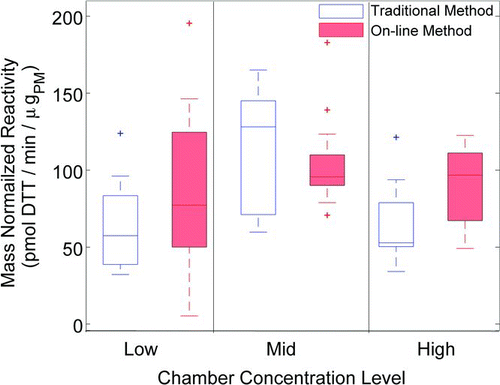Figures & data
FIG. 1 (a) Picture of a PDMS microfluidic chip infused with CoPC electrodes for sensing reduced DTT quantity in solution. (b) Chip schematic, 10 μL injections of the DTT + PM solution enter the inlet and are pushed through the flow channel by a syringe pump. CoPC electrodes measure electrical conductivity of the solution at a potential of +200 mV. Conductivity of the solution is directly proportional to DTT concentration.
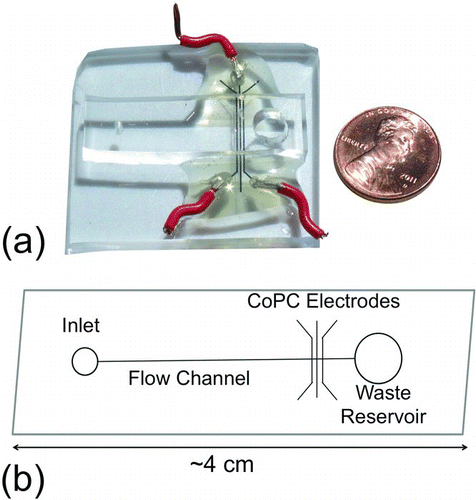
FIG. 2 Schematic of the experimental setup. Aerosolized urban dust was generated at high, middle, and low concentration levels. A fan, dilution/exhaust manifold and timing switch were installed to mix PM and hold mass concentration steady. Reactivity analysis was performed by both the traditional and on-line techniques in parallel for comparison.
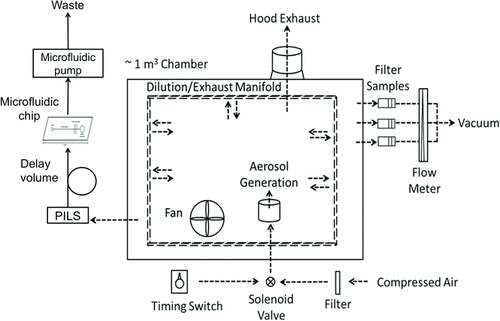
FIG. 3 Aerosolized urban dust size distribution (count fraction) averaged over three test replicates; one from each concentration level (high, middle, low). Error bars represent one standard deviation.
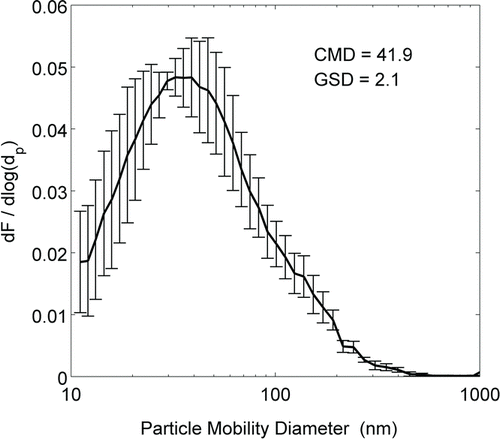
FIG. 4 Correlation diagrams of raw DTT consumption versus PM mass for each experiment. Estimates for slope, intercept, and Pearson correlation coefficients are shown for (a) on-line detection of raw DTT consumption versus M injection and (b) traditional measurement of raw DTT consumption versus M assay. Error bars represent (a) one standard deviation of reactivity for multiple injections in the microfluidic chip and (b) one standard deviation of reactivity for triplicate measurements of three collected filters per experiment on the y-axis and one standard deviation of PM mass per assay among the three collected filter masses per experiment on the x-axis.
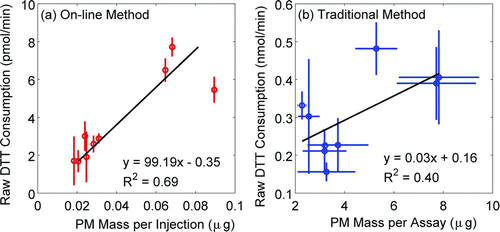
FIG. 5 Box-whisker plots of mass-normalized DTT reactivity measured by each monitoring approach as a function of chamber concentration level.
